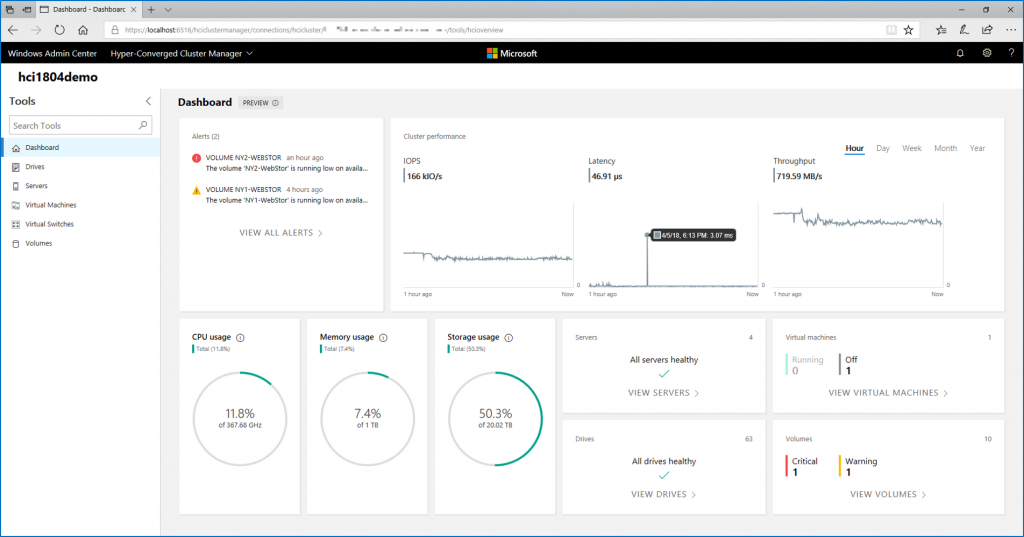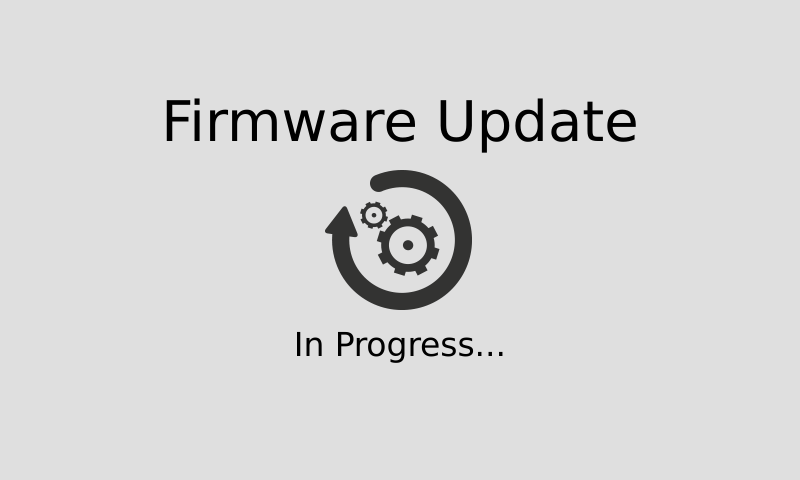Lately I worked for a customer to add two nodes in an existing 2-nodes Storage Spaces Direct cluster. The existing nodes are running on Windows Server 2016 while the new ones are running on Windows Server 2019. So, when I integrated the new nodes to the cluster, it was in mixed operating system mode because two different versions of Windows ...
Read More »Use Honolulu to manage your Microsoft hyperconverged cluster
Few months ago, I have written a topic about the next gen Microsoft management tool called Honolulu project. Honolulu provides management for standalone Windows Server, failover clustering and hyperconverged. Currently hyperconverged management works only on Windows Server Semi-Annual Channel (SAC) versions (I cross finger for Honolulu support on Windows Server LTSC). I have upgraded my lab to latest technical preview ...
Read More »The cluster resource could not be deleted since it is a core resource
The last month, I wanted to change the Witness of a cluster from a Cloud Witness to a File Share Witness. The cluster is a 2-node S2D cluster and as discussed with Microsoft, Cloud Witness should not be used with a 2-node cluster. If the Cloud Witness fails (for example when subscription has expired), the cluster can crashes. I’ve experienced ...
Read More »Next gen Microsoft management tool: Honolulu
Since the beginning of the year, Microsoft is working on a new management tool based on modern web languages such as HTML5, Angular and so on. This tool is called Honolulu. Honolulu is a user-friendly web interface that enables to manage Windows Server, Failover Clustering and Hyperconverged cluster. Currently, to manage hyperconverged cluster, Honolulu requires Semi-Annual Windows Server release. Honolulu ...
Read More »Update Mellanox network adapter firmware
Like the others, Mellanox network adapters should be updated to the latest firmware to solve issues. When you download the Mellanox firmware release note, you can see how much reported issues have been solved (usually, a lot :)). Mellanox provides tools to update and manage the firmware from Linux, Freebsd, VMware ESXi, Windows and Windows PE. Thanks to this set ...
Read More »Understand Failover Cluster Quorum
This topic aims to explain the Quorum configuration in a Failover Clustering. As part of my job, I work with Hyper-V Clusters where the Quorum is not well configured and so my customers have not the expected behavior when an outage occurs. I work especially on Hyper-V clusters but the following topic applies to most of Failover Cluster configuration. What’s ...
Read More »Deploy and add Network Controller to Virtual Machine Manager
Network Controller is a new feature which will be available with Windows Server 2016. This feature enables to manage centrally the virtual and the physical network infrastructure to automate the management, configuration monitoring and troubleshooting. After a quick overview about network controller, I’ll explain how to deploy network controller and how to connect it to Virtual Machine Manager. Network Controller ...
Read More »Upgrade Virtual Machine Manager 2012 R2 in High Availability to Technical Preview 2
Currently the last build for the next release of Virtual Machine Manager is the Technical Preview 2 (maybe Technical Preview 3 in the end of the month). In this topic, I will explain how to upgrade Virtual Machine Manager 2012 R2 installed in high availability to the Technical Preview 2. Architecture Overview My Virtual Machine Manager nodes are in a failover ...
Read More »Generate NanoServer VHDX image easily with PowerShell
The last month I have presented how to generate a NanoServer VHDX image from the Windows Server 2016 Technical Preview 2 ISO. If you have read the topic, you have seen that there are a lot of steps. So I have decided to create a PowerShell script to generate NanoServer VHDX image and I want to share it in this ...
Read More »Prepare a VHDX image of Nano Server
Microsoft has recently announced a new version of Windows Server 2016 called Nano Server. The main advantage of this Windows Server version is the small footprint. For that, Microsoft has removed the Graphical User Interface stack, 32-bit support, local logins or Remote Desktop support. Nano Server can be managed only remotely by using PowerShell, WMI or WinRM. Nano Server has ...
Read More »








